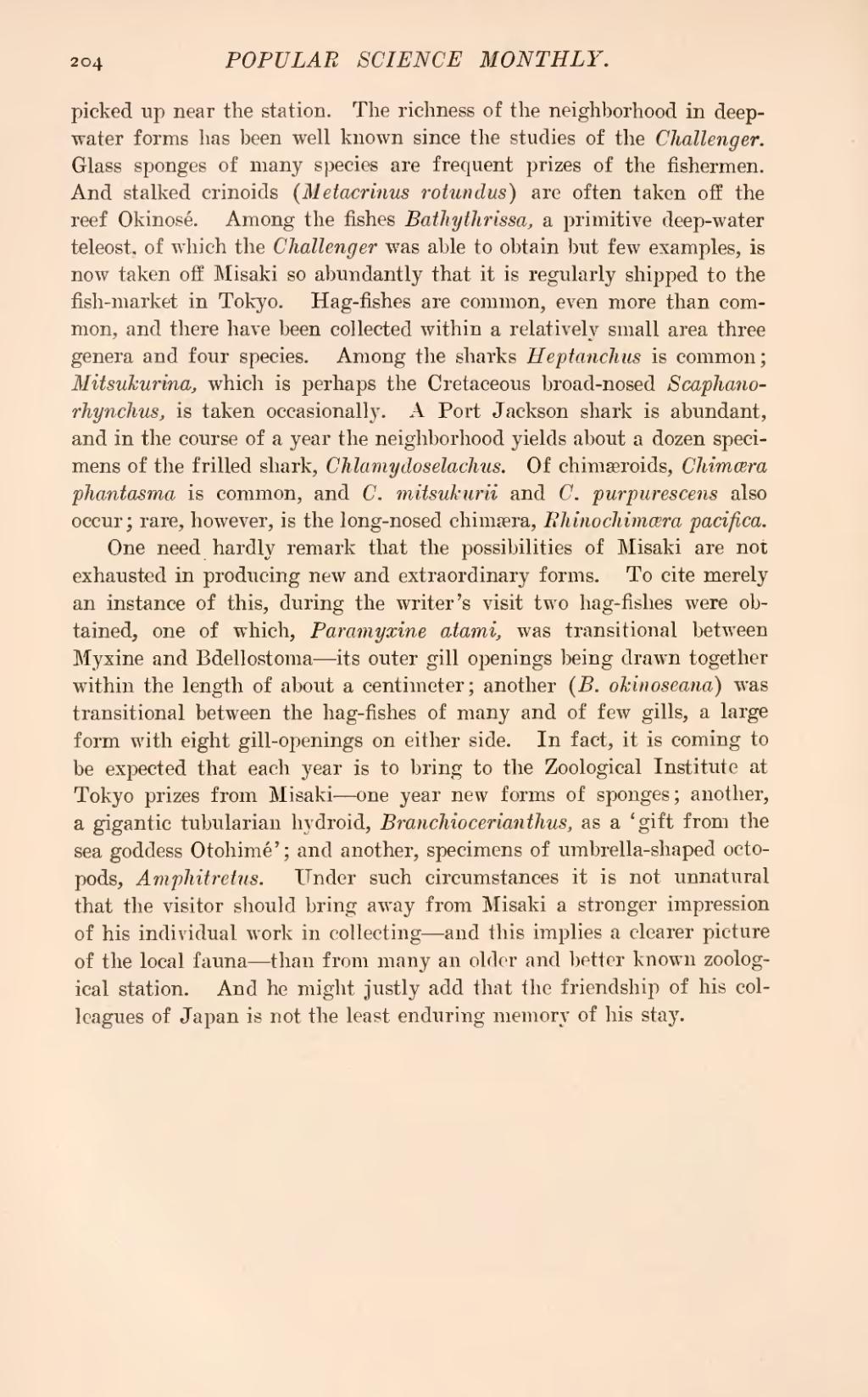picked up near the station. The richness of the neighborhood in deep-water forms has been well known since the studies of the Challenger. Glass sponges of many species are frequent prizes of the fishermen. And stalked crinoids (Metacrinus rotundus) are often taken off the reef Okinosé. Among the fishes Bathythrissa, a primitive deep-water teleost, of which the Challenger was able to obtain but few examples, is now taken off Misaki so abundantly that it is regularly shipped to the fish-market in Tokyo. Hag-fishes are common, even more than common, and there have been collected within a relatively small area three genera and four species. Among the sharks Heptanchus is common; Mitsukurina, which is perhaps the Cretaceous broad-nosed Scaphanorhynchus, is taken occasionally. A Port Jackson shark is abundant, and in the course of a year the neighborhood yields about a dozen specimens of the frilled shark, Chlamydoselachus. Of chimseroids, Chimæra phantasma is common, and C. mitsukurii and C. purpurescens also occur; rare, however, is the long-nosed chimæra, Rhinochimæra pacifica.
One need hardly remark that the possibilities of Misaki are not exhausted in producing new and extraordinary forms. To cite merely an instance of this, during the writer's visit two hag-fishes were obtained, one of which, Paramyxine atami, was transitional between Myxine and Bdellostoma—its outer gill openings being drawn together within the length of about a centimeter; another (B. okinoseana) was transitional between the hag-fishes of many and of few gills, a large form with eight gill-openings on either side. In fact, it is coming to be expected that each year is to bring to the Zoological Institute at Tokyo prizes from Misaki—one year new forms of sponges; another, a gigantic tubularian hydroid, Branchiocerianthus, as a 'gift from the sea goddess Otohimé'; and another, specimens of umbrella-shaped octopods, Amphitretus. Under such circumstances it is not unnatural that the visitor should bring away from Misaki a stronger impression of his individual work in collecting—and this implies a clearer picture of the local fauna—than from many an older and better known zoological station. And he might justly add that the friendship of his colleagues of Japan is not the least enduring memory of his stay.

